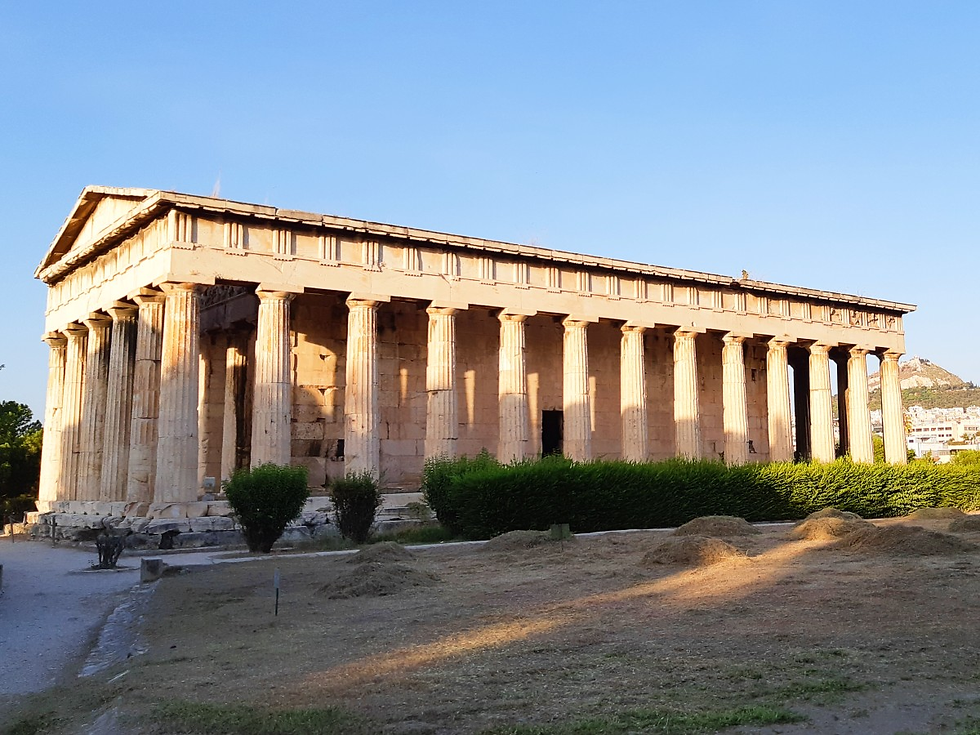Historical background and significance of each structure
- Johnny Ka
- Jul 27, 2023
- 3 min read
Updated: Aug 5, 2023
Introduction:
Athens, the birthplace of democracy and a cradle of Western civilization, boasts a remarkable collection of architectural treasures that have stood the test of time. In this review, we delve into the historical background and significance of three iconic structures in Athens, Greece—the Parthenon, Erechtheion, and Propylaea. These majestic monuments not only showcase the architectural brilliance of ancient Greece but also hold profound historical and cultural significance.

The Parthenon - Symbol of Athenian Democracy:
The Parthenon, perched atop the Acropolis, is an enduring symbol of Athenian democracy and the pinnacle of classical architecture. Constructed between 447 and 432 BCE, the temple was dedicated to the goddess Athena, the patron deity of Athens. Its architecture, a blend of Doric and Ionic styles, represented the harmony and balance of Greek aesthetics.
The historical background of the Parthenon lies in the victory of the Greeks against the Persians during the Greco-Persian Wars. The construction of the temple served as a testament to Athenian power and the city's cultural and artistic achievements. The intricate friezes and metopes depicted mythological and historical events, emphasizing the city's rich heritage.

Moreover, the Parthenon embodied democratic ideals. It housed the treasury of the Delian League, an alliance of Greek city-states, and the renowned 12-meter tall statue of Athena Parthenos. The temple's design and decorations were a collective effort of architects, sculptors, and craftsmen, reflecting the collaborative spirit of Athenian democracy.
Erechtheion - Mythological Significance and Architectural Mastery:
Adjacent to the Parthenon, the Erechtheion is a masterpiece of Ionic architecture with profound mythological and historical significance. Constructed between 421 and 406 BCE, the temple was dedicated to both Athena and Poseidon, showcasing the complex religious and cultural heritage of Athens.

The Erechtheion's unique design pays homage to the mythological stories associated with the site. It is said to have been built on the spot where Athena and Poseidon contested for the patronage of Athens, and where the mythical king Erechtheus was buried. The Caryatids, sculpted female figures serving as columns, symbolize the daughters of Erechtheus and add an element of elegance and mystique to the structure.
Beyond its mythological ties, the Erechtheion holds historical significance as a sacred space for Athenians. It housed religious artifacts, including the sacred olive tree, a symbol of Athena's gift to the city, and the mark of the city's prosperity and divine favor.
Propylaea - Gateway to the Acropolis:
The Propylaea, the monumental gateway to the Acropolis, played a crucial role in the daily life and rituals of ancient Athenians. Designed by Mnesicles, construction of the Propylaea began in 437 BCE but remained unfinished due to the outbreak of the Peloponnesian War.

This impressive structure served as the formal entrance to the Acropolis and was the gateway through which visitors and religious processions would pass. Its grandeur and meticulous design reflect the importance of the Acropolis as the religious and cultural center of Athens.
The Propylaea's historical significance lies in its architectural ingenuity and its position as a symbolic threshold between the sacred and secular worlds. It was designed to evoke a sense of awe and reverence as one entered the hallowed grounds of the Acropolis. The monument's intricate marble carvings and imposing staircase served as a testament to Athenian power and cultural achievements.
Conclusion:
The Parthenon, Erechtheion, and Propylaea stand as enduring testaments to the rich history and cultural heritage of Athens, Greece. Each structure holds profound significance, reflecting the triumphs, myths, and democratic ideals of ancient Athens.
The Parthenon, with its grandeur and architectural splendor, symbolizes Athenian democracy and cultural achievements. The Erechtheion, with its graceful Caryatids and mythological ties, represents the complex religious heritage of the city. The Propylaea, as the gateway to the Acropolis, showcases the architectural brilliance and the symbolic threshold between the sacred and secular realms.
Visiting these structures is a journey through time, immersing oneself in the narratives of ancient Greece. These architectural treasures continue to captivate visitors, evoking a profound sense of awe and appreciation for the historical and cultural legacy of Athens, a city that has left an indelible mark on the course of human civilization.




Comments